Low-carbon Strategy
To expedite the green construction of data centers and embrace high-efficiency, low-carbon intensive, and circular development, and in accordance with "Guiding Opinions on Strengthening the Construction of Green Data Centers of the Ministry of Industry and Information Technology of the People’s Republic of China, National Government Offices Administration, and National Energy Administration" and "National Data Center Application Development Guidelines", we strive to improve energy and resource efficiency throughout the lifecycle of our data centers, including design, construction, and operation and maintenance. Additionally, we identify areas with energy saving and emissions reduction potential in our offices, aligning our operations with the green development strategies of the industry and of the nation.
In 2020, the energy consumption, water consumption, and greenhouse gas emissions of VNET were as follows:
Energy consumption, water consumption, and greenhouse gas emissions of VNET in 2020
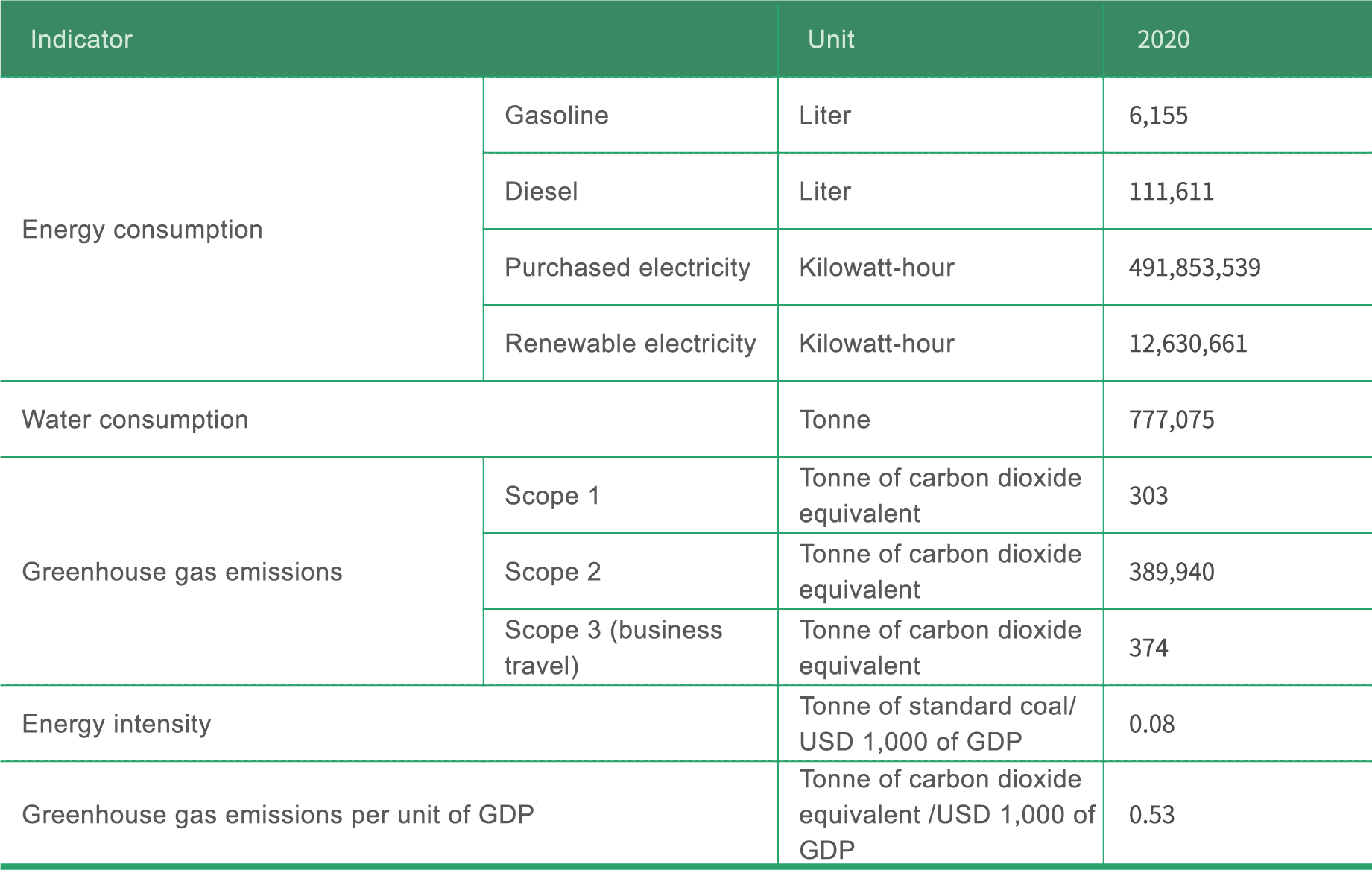
1 Scope 1 refers to direct greenhouse gas emissions from the consumption of gasoline and diesel. The emission coefficients are derived from the China Energy Statistical Yearbook 2013, Provincial Greenhouse Gas Inventory Guidelines (Trial), 2006 IPCC National Greenhouse Gas Inventory Guidelines, etc.
2 Scope 2 refers to indirect emissions from externally purchased electricity. The emission coefficients are derived from the average carbon dioxide emission factor of China's regional power grid in 2012.
3 Scope 3 refers to indirect emissions from travel. The emission coefficients are from Defra&DECC.
4 As companies approach Scope 3 in very different ways, greenhouse gas emissions per unit of GDP are calculated on the basis of the total of Scope 1 and 2.
VNET prioritizes the goals of green development, low-carbon transformation and carbon neutrality proposed in the 14th Five-Year Development Plan of China and has incorporated such goals into our own practices. We are expediating progress towards carbon neutrality by means of carbon emissions trading, improvement in the utility of low-emissions electricity, and investments in clean and renewable energy technology and projects to contribute to carbon neutrality.
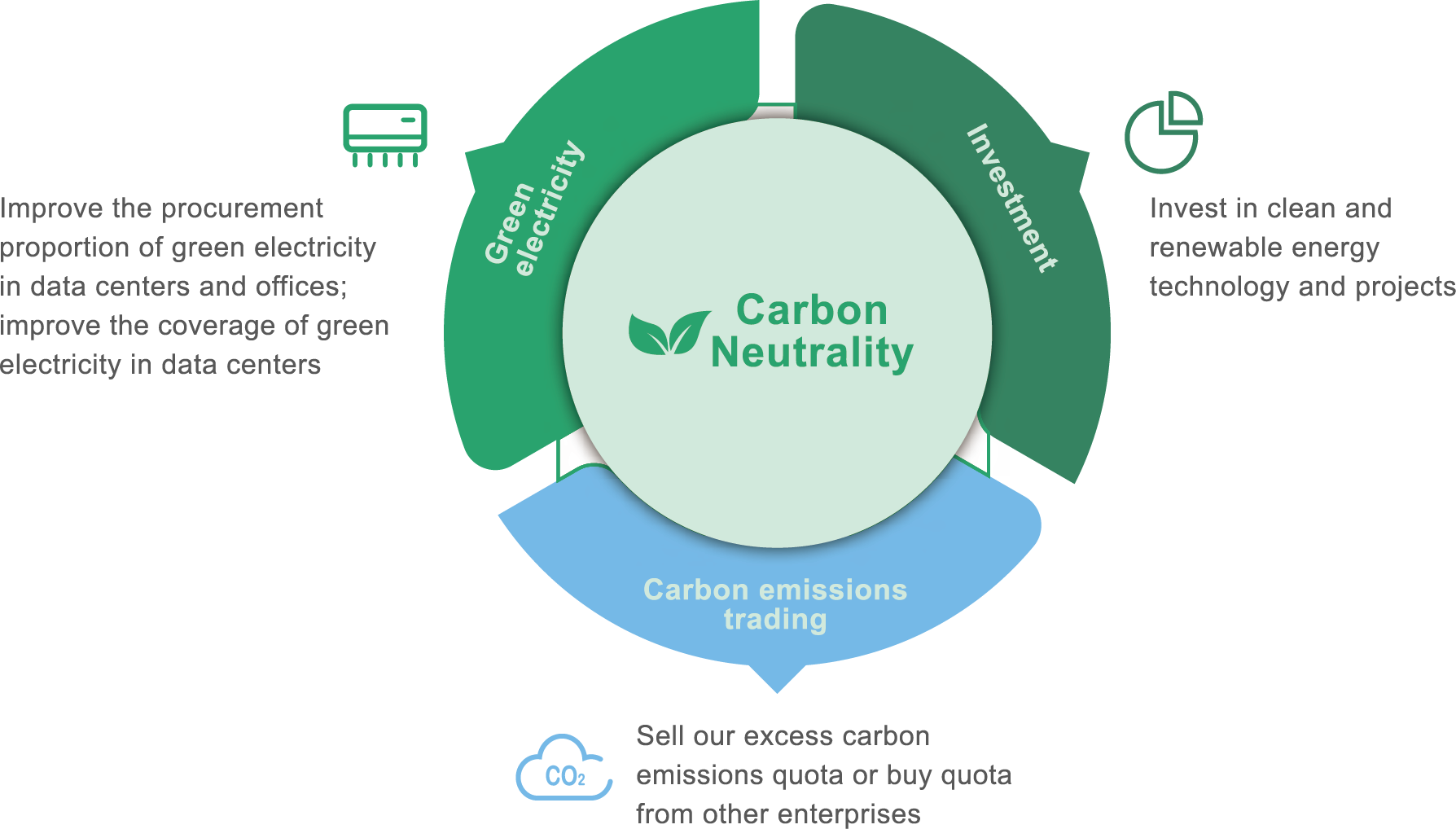
Green Data Centers
We developed our "Energy Management System", "Cabinet Power Management System", "Diesel Use Management Regulations" and other rules and regulations to standardize and guide energy conservation and consumption reduction work, and continue to explore new ways to improve resource efficiency and cut carbon emissions.
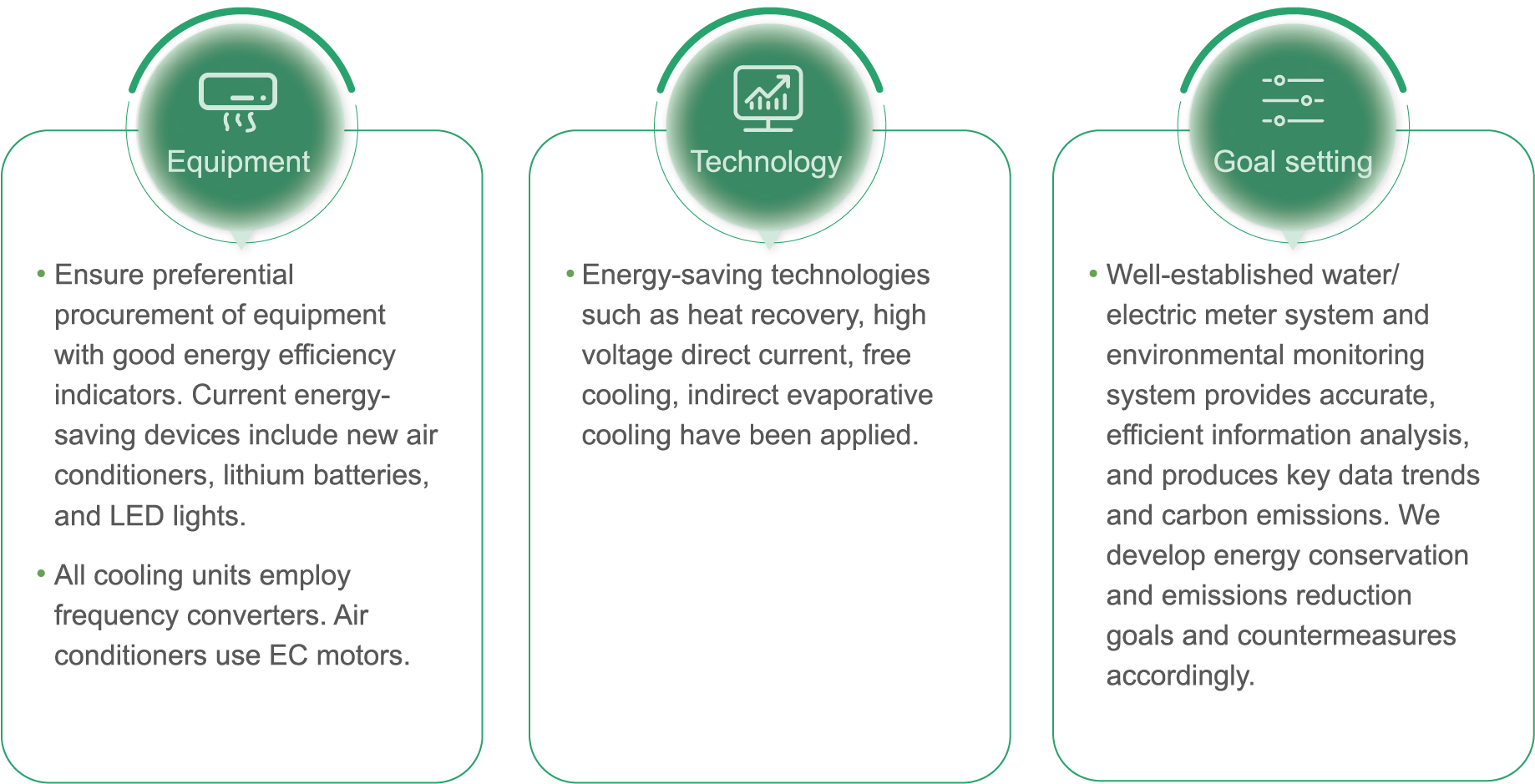
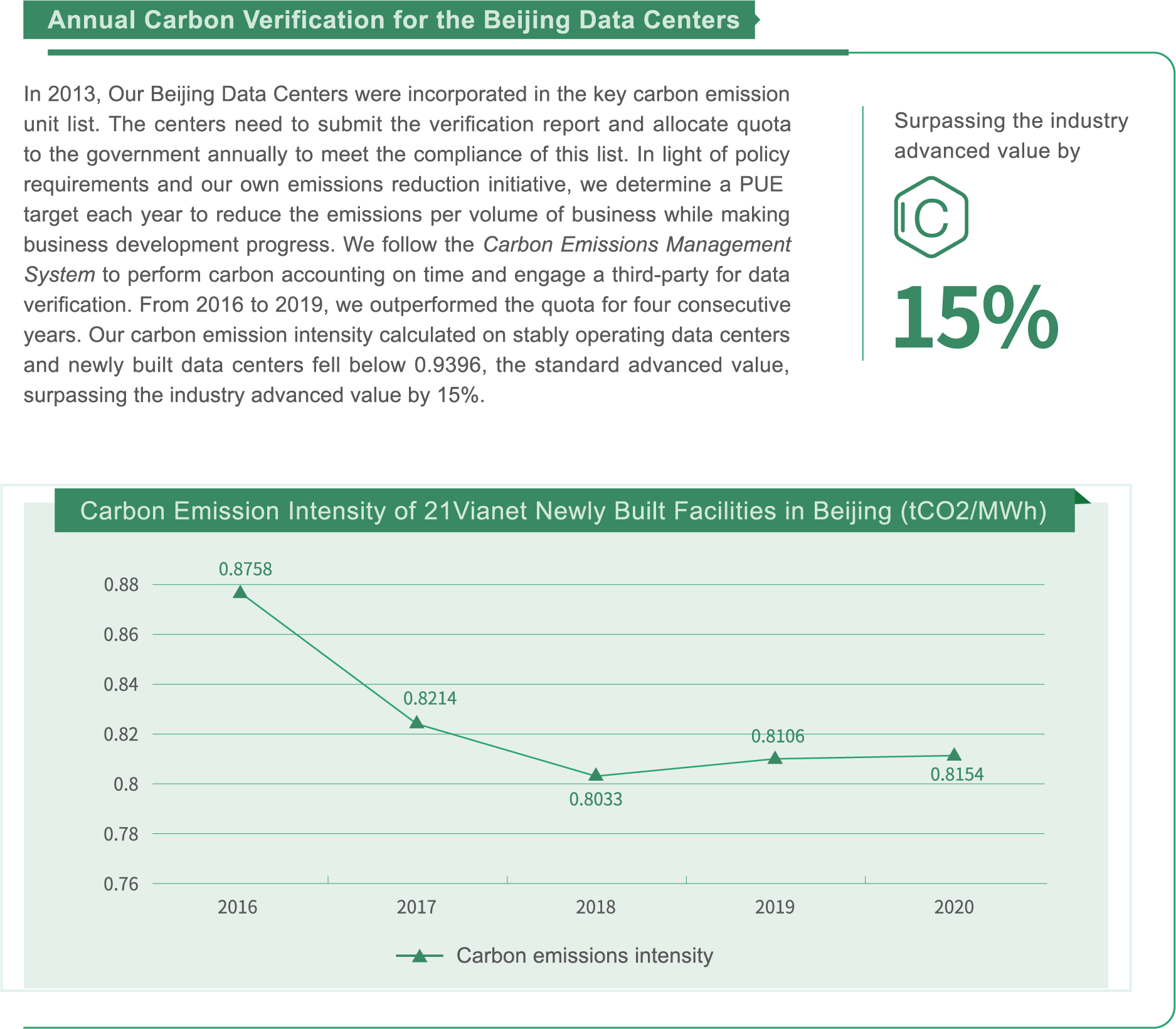
Green Certifications
We have received the ISO14001 environmental management certification for all environmental management activities of our computer system integration and software development services, including data center services, cloud computing, dedicated Internet access, and server and network equipment hosting services. VNET has also received the ISO 50001 energy management system certification for the energy management activities of our data center, cloud computing, dedicated Internet access, server and network equipment hosting services, and office operations.
In response to the "Guiding Opinions on Strengthening the Construction of Green Data Centers of the Ministry of Industry and Information Technology of the People’s Republic of China, National Government Offices Administration, and National Energy Administration", VNET has worked on improving the major indicators in the "Evaluation Index System of Green Data Center". As of the end of 2020, three data centers were shortlisted as national green data centers, including the M6 data center which was one of the first certified national green data centers, the Hangzhou Economic Development Zone Data Center, and the Anhui Suzhou High-tech Zone Data Center. These achievements exemplify the high energy-saving and environmental performance of our data centers.
In addition, VNET is actively taking on the responsibility of energy conservation and emissions reduction, and our multi-dimensional, multi-channel energy conservation and emissions reduction efforts towards green data centers have been well received by local governments. VNET received RMB 600,000 of energy conservation and carbon reduction incentives from the Chaoyang District Development and Reform Commission in Beijing in 2020.
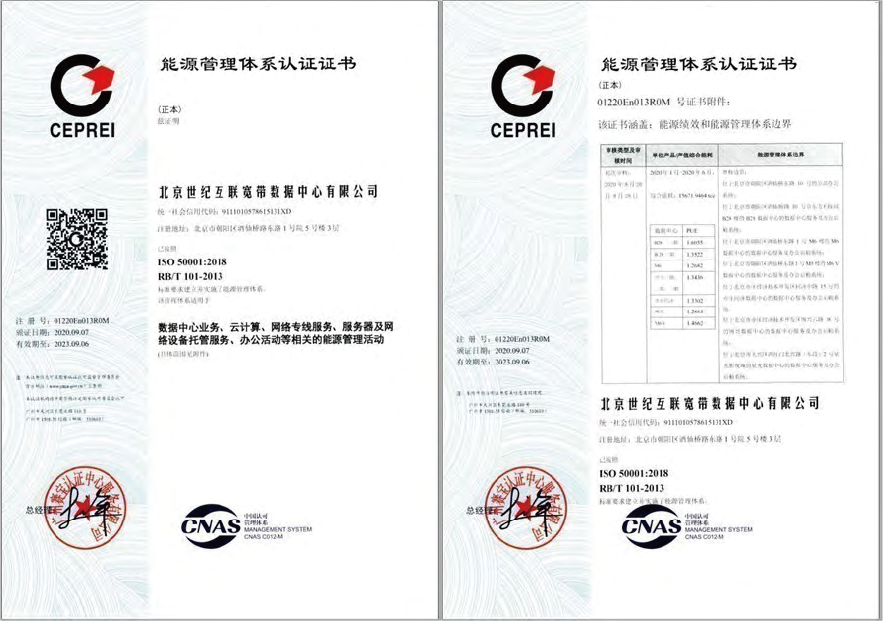
Green Targets
Our average PUE target in 2020 went down by 2% compared to 2019. We set up an overall PUE target, and break it down according to the actual operation of each data center, establish a PUE target for each data center, and closely monitor the achievement of PUE. We also promote energy-saving design and transformation from technical and management dimensions, and have issued our PUE Energy-Saving Project Incentive Plan, which outlines the definition, target, execution, audit, and incentive mechanism of energy-saving projects to encourage employees to better achieve PUE targets.
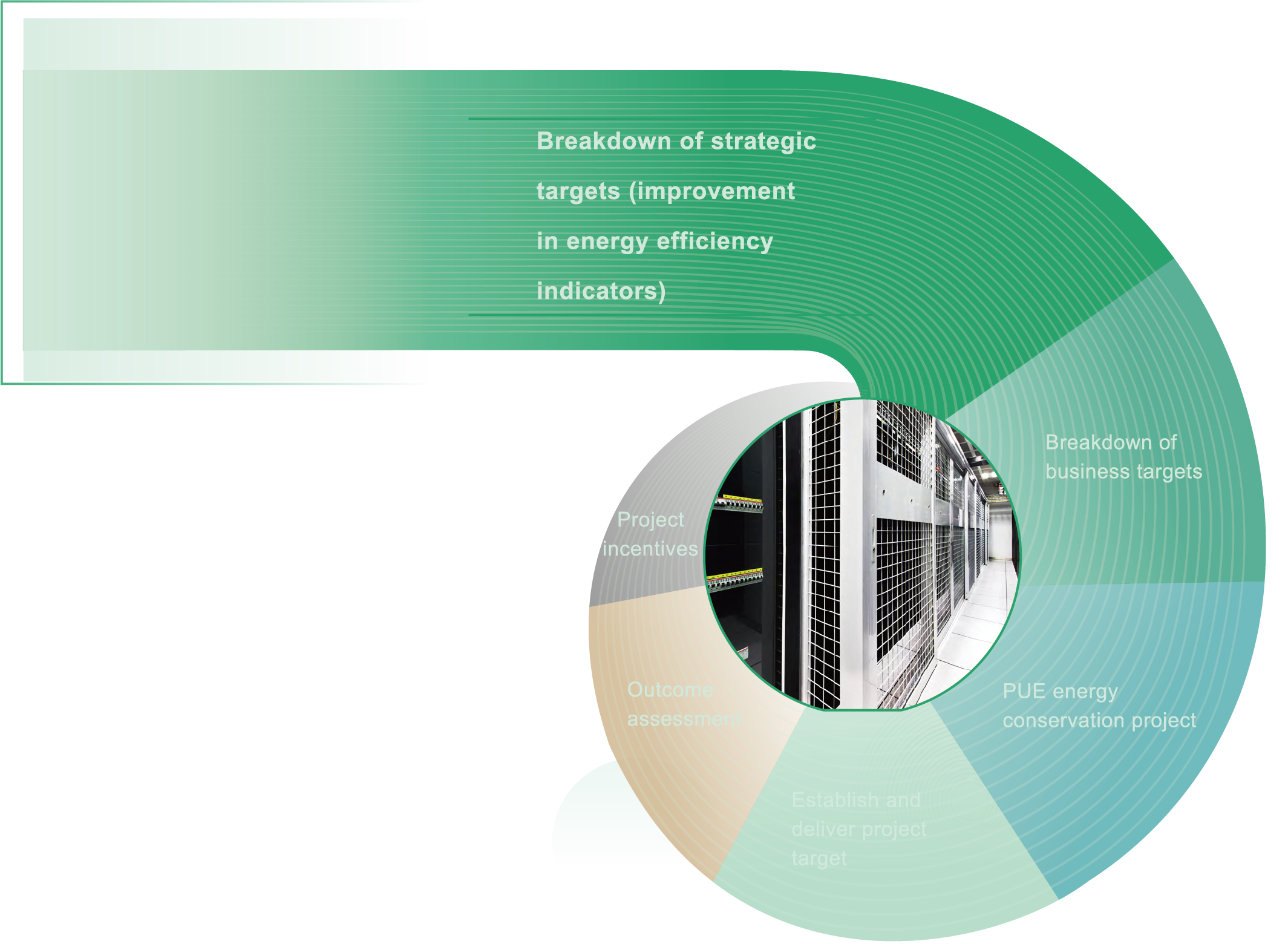
To achieve the established PUE target, we implemented a number of dedicated energy-saving measures:
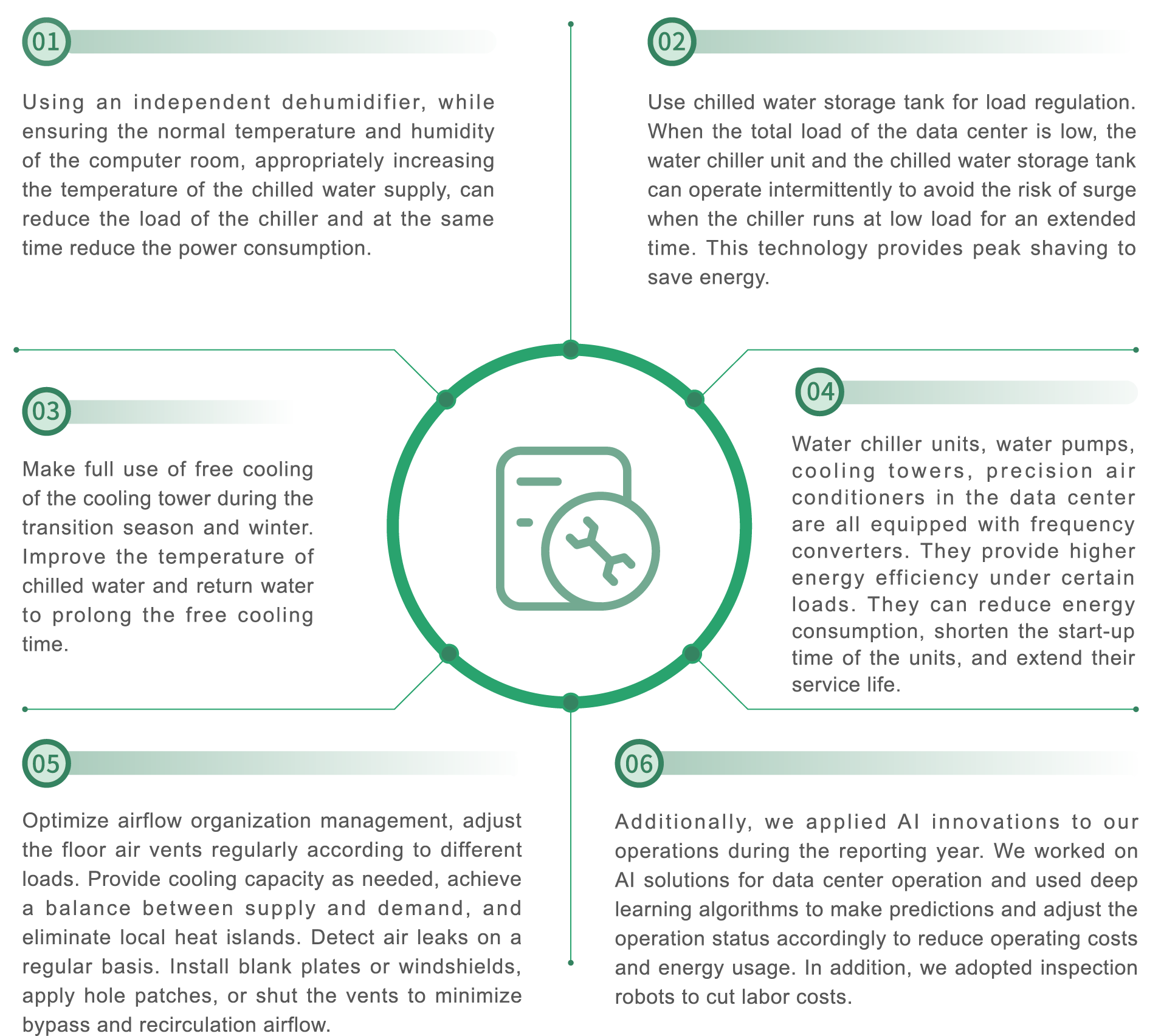
Waste Management
We have been standardizing our waste gas, and solid waste management in strict accordance with laws and regulations such as the "Law of the People's Republic of China on the Prevention and Control of Atmospheric Pollution", "Law of the People's Republic of China on Prevention and Control of Water Pollution", "Law of the People's Republic of China on the Prevention and Control of Soil Pollution", "Law of the People's Republic of China on the Prevention and Control of Solid Waste Pollution", "Law of the People's Republic of China on the Prevention and Control of Noise Pollution". We take water pollution management, air pollution management, and waste pollution management as our key environmental protection tasks and control the total amount of waste generated. We developed the "Standard Safe and Civilized Construction Manual" and "Hazardous Waste Management Manual" to integrate source control, process control and treatment of pollutants into project operations and provide detailed rules for waste classification, storage, and recycling at construction sites. In addition, we strictly control the domestic waste and domestic wastewater generated during our operations and ensure compliance with wastewater discharge regulations. Solid waste is properly classified and recycled. Waste batteries in data centers are recycled by manufacturers with required environmental qualifications. In the third and fourth quarters of 2020, we recycled 234 tons of used batteries from data centers.